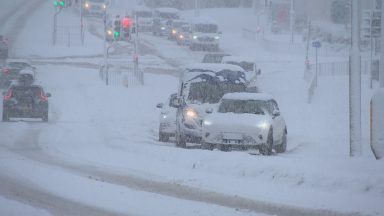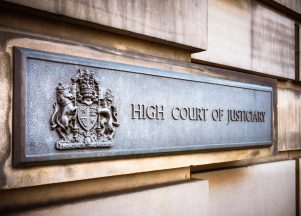John Cobb was a racing driver who wanted to be the fastest person on land and water.
He had previously set the world land-speed record three times when he took to Loch Ness in 1952.
Reaching speeds of more than 200mph, Cobb was killed when his jet-powered speedboat effectively disintegrated around him.
To mark the 70th anniversary of his death, a special two-day exhibition will retell his story this weekend.
Who was John Cobb?
Born near the Brooklands racing track in Surrey in 1899, Cobb won his first race there in 1925, driving a Fiat.
The son of a wealthy furs broker, he worked in his father’s firm and used the money he made to fund his passion for motor racing.
After a number of successes on the track, Cobb turned his attention to setting the land-speed record.
How fast did he go?
Cobb became the fastest man on land three times, in 1938, 1939 and 1947.
All the records were set at Bonneville salt flats, an area near Utah that was marked out for motorsport.
Driving a piston-engined Railton Special, he set the first record at 350mph, before hitting 369mph a year later.
His attempts were interrupted by the Second World War, when he served as an RAF pilot, before he returned to Bonneville to drive at 394mph in 1947.
Cobb remained the fastest man on land until his record was broken in 1963.
Tragedy on water
After setting his third land record, Cobb decided to try reaching extreme speeds on water.
He commissioned a jet-powered speedboat called Crusader and selected Loch Ness as the venue for the attempt.
Following a failure ten days earlier, Cobb returned to the water on September 29, 1952, and was tragically killed during his first attempt when the boat hit a wake and disintegrated around him.
The speedster’s body was thrown 50 yards beyond the wreckage.
Even though the timekeeper’s log stated a new record speed of 206.89mph, it didn’t count because no second run could be made.
Theories put forward include one that the Crusader’s engine exploded, that Cobb reduced speed too quickly, or that ripples produced by another boat or a current made it bounce.
What happened next?
Thousands lined the streets of Inverness on October 1, 1952 to bid farewell to Cobb as a hearse carrying his body left the Royal Northern Infirmary.
He was taken to Surrey and buried at Christ Church in Esher.
Crusasder’s remains were located on the bed of Loch Ness in 2002 at a depth of 656ft and the site was given official protection as a ‘scheduled monument’ three years later.
An exhibition, entitled Remembering John Cobb, will be held at Glen Urquhart Hall in Drumnadrochit on Friday and Saturday.
Follow STV News on WhatsApp
Scan the QR code on your mobile device for all the latest news from around the country





























